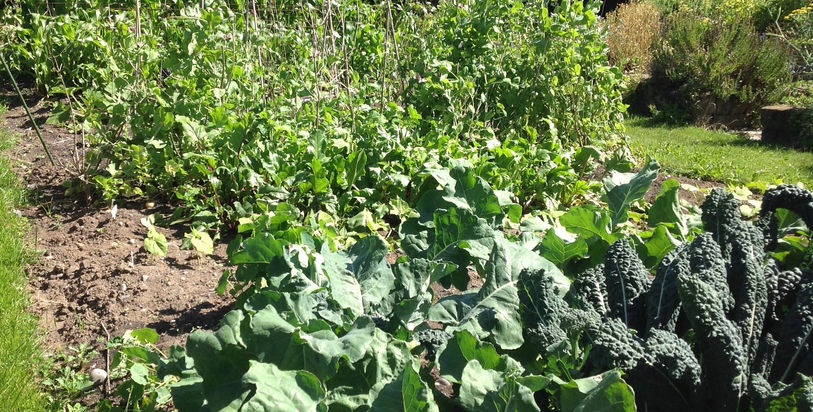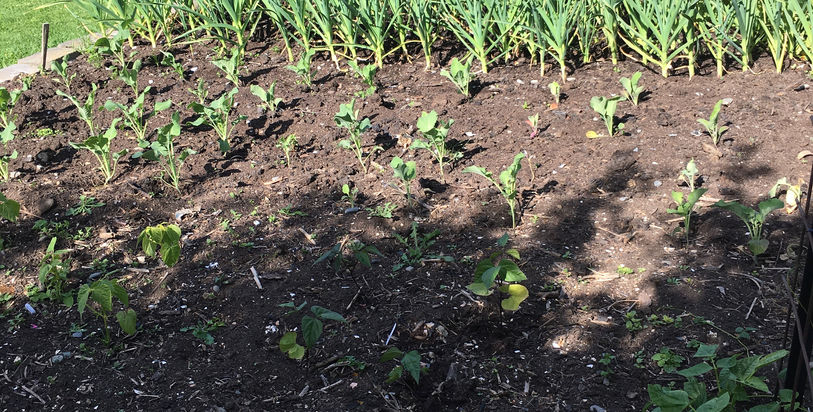
Companion Planting
What is companion planting? Simply put, it's the plantings of different plants in proximity and beneficial harmony so that they assist each other with pest control, nutrient uptake, pollination and thus increasing productivity. The three main strategies are:-
1. Environmental manipulation which means plants that are mutually beneficial and basically like each other ie Carrots and Onions, Sweet Corn and Potatoes, Tomatoes and Asparagus.
2. Disease and pest control - planting onions next to carrots repels carrot rust fly as the onion smell masks the smell of the carrot.
3. Biodiversity - By planting flowers amongst or on the edges of your vegetable and herbs provides shelter for spiders and beneficial insects as well as looking good.
I plant my vegetables with companion vegetables and has always worked well for me along with various flowers such as marigolds, phacelia, cosmos in some of the vegetable beds or the back border.
Companion planting for me is not just about planting certain plants together it’s the more holistic benefit it has which comes back to the essence of permaculture. For me not only does companion planting make my garden and in particular my vegetable garden better but the whole eco system within the garden. By bringing in herbs and flowers into the vegetable garden this in turn brings in a variety of insects, birds, bacteria, fungi and earthworms which all have great benefit to having a healthy organic garden. For me the essence of companion gardening is having a diverse eco system which supports itself, bringing beneficial insects and building up good soil for planting. Having such biodiversity in the garden not only makes it attractive to look at but helps with pollination and but keeps a stable balance within a system ie water and nutrients, composition soil and micro organisms along with predators and prey, are all key factors to a healthy and stable growing environment.
Like humans, plants have their likes and dislikes and grow strongly or not depending on the company of others. This is called ‘Allelopathy’, the beneficial or harmful effect of one plant to another, by the release of chemicals from different parts of the plant by leaching (draining/filtering), root exudation (the smell of something that has rotted) and decomposition (rotting).
Companion plantings is nothing new, the Romans were writing about it and has been used throughout the centuries especially by many cultures, such as Native Americans, Monks in Monasteries throughout the world etc.
Some of the main benefits of Companion planting as follows:-
Planting plants that are mutually beneficial to one another such as tomatoes are friends with asparagus, carrots, celery, basil, chives and onions but not good near sweet corn, potatoes and rosemary.
Some plants are supposed to help repel pests, especially odoriferous (strong smelling) plants such as onions, chives and garlic. I plant carrots along side all of these to deter carrot root fly.
Intercropping is about having compatible growth habits and fitting as many plants into one space.
The most famous of these is the “Three Sisters” which was developed by Native Americans and is a combination of Sweet Corn, Climbing Beans and Squash. To do this you do need a bit of space and ideally do it in circle mounds. Flatten off the top part of the mound and plant you corn in a circle configuration about 10-15cm apart. A few weeks after planting the corn you can directly plant the beans below the corn in the middle of the mound. Once the corn has grown up to about knee height and the beans are about 15cm high then you can then plant your squash around the bottom of the mound, about 4 to six seeds per mound.
This is just one example but there are plenty of others, such as tomato and carrots; the tomatoes provide shade for carrots and a physical barrier against carrot root fly. Both have different repelling agents. Broad Beans and early Potatoes work well as they have different root systems and the beans can protect against frost. Planting lettuce and radish which both grow quickly can be put in along side other crops such as cabbages and carrots which take time to establish.





